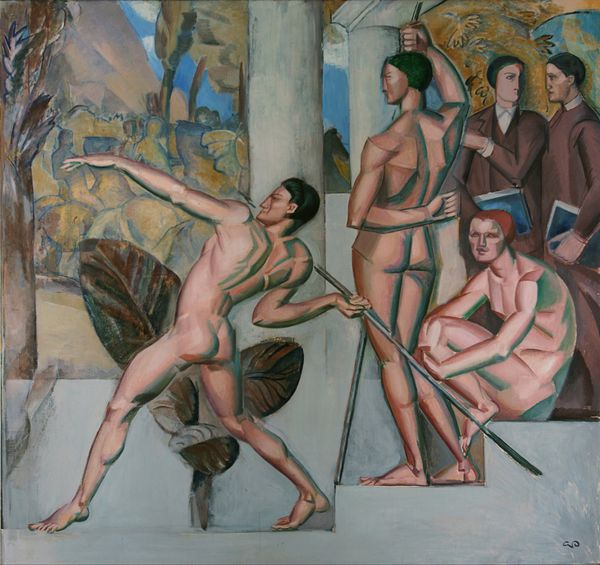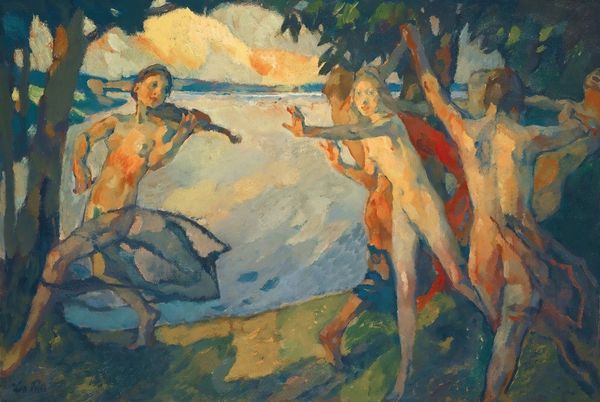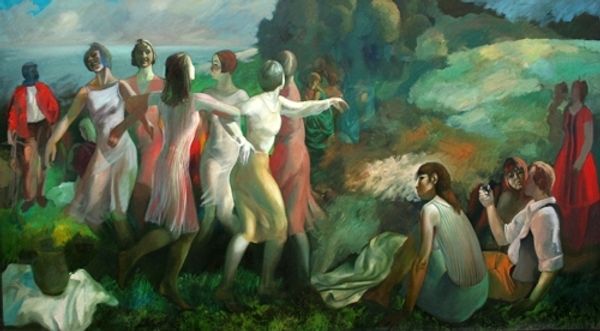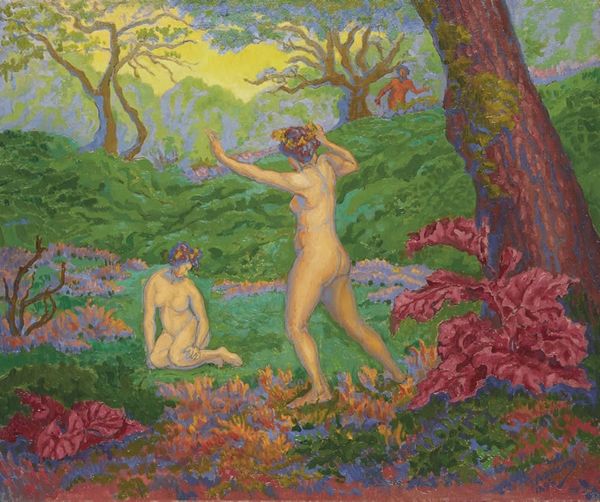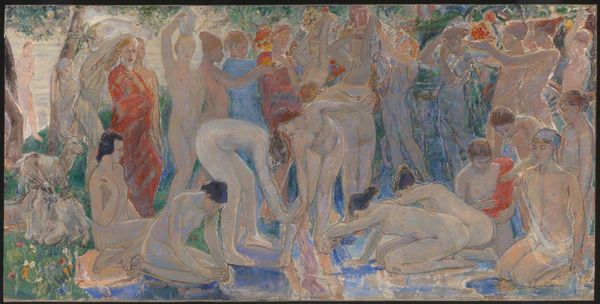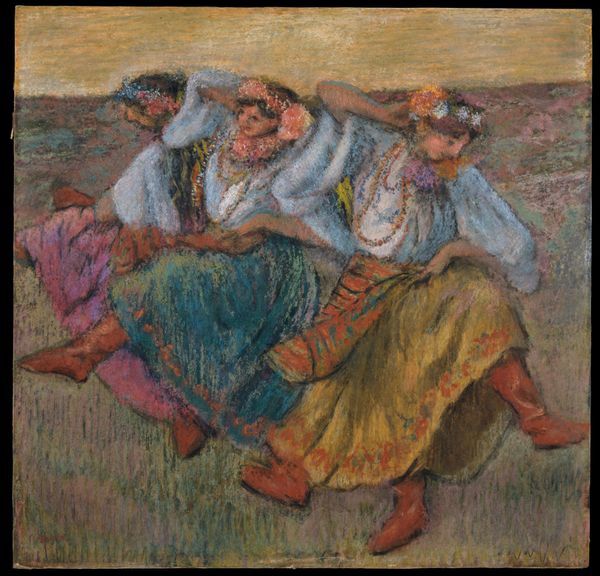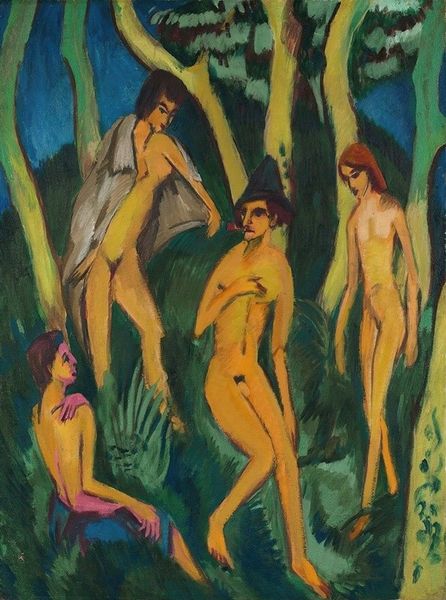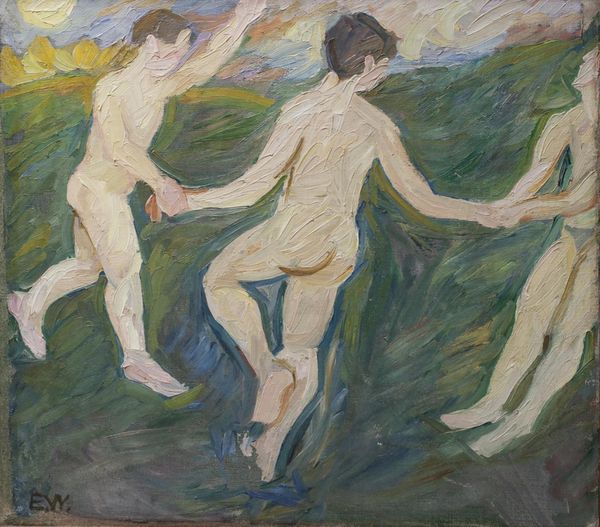
Dimensions: support: 533 x 660 mm
Copyright: © Tate | CC-BY-NC-ND 4.0 DEED, Photo: Tate
Editor: Here we have Duncan Grant’s "Dancers," medium unknown, at the Tate. The figures, their forms, are so intriguing. What strikes you most about the composition? Curator: The arrangement of the figures compels attention. Observe how the artist manipulates color—the juxtaposition of the saturated reds and blues against the muted greens and yellows creates a dynamic tension. Note the interplay of lines, both implied and explicit, leading the eye around the circle. Editor: It’s as if the color palette itself constructs a narrative. Curator: Precisely. The painting transcends mere representation, achieving a formal harmony that speaks to the very nature of artistic expression. Each element contributes to the structural integrity of the whole. Editor: It is much more than just figures holding hands in a circle. Thanks for pointing out the formal structures in the painting.
Comments
Join the conversation
Join millions of artists and users on Artera today and experience the ultimate creative platform.
tate 6 months ago
⋮
Duncan Grant was a leading figure in the Bloomsbury Group. In 1909 he visited the Paris studio of Matisse, whose Dancers may have partly inspired this painting. The vibrant colours and dynamic forms also reflect the influence of Gauguin, Cézanne and van Gogh. These were the chief artists introduced to British audiences through Roger Fry’s ‘Manet and the Post-Impressionists’ exhibition, which was held at the Grafton Galleries in London between 1910 and 1911. Gallery label, February 2010
